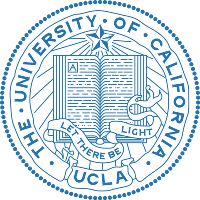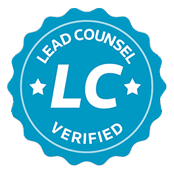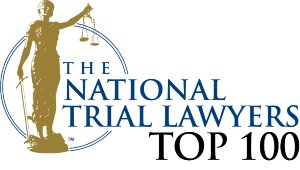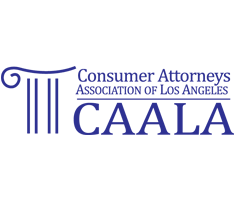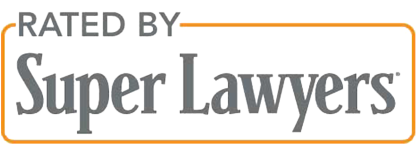Product liability lawsuits allow consumers to hold manufacturers accountable when a defective product causes injury or damage. However, proving that a product’s design was defective can be challenging. This article will examine the legal standards for demonstrating a design defect, the types of evidence plaintiffs typically use, and strategies for building a compelling case.
Legal Standards for Proving Design Defects
Several legal doctrines apply when plaintiffs allege a product’s design was inherently flawed. The main standards are:
Consumer Expectations Test
This test asks whether the product failed to perform as safely as an ordinary consumer would expect when used reasonably. For example, a customer would expect a lawnmower not to explode when turned on. If it did, its design could be defective.
Risk-Utility Test
This approach balances the product’s risks against its usefulness and cost. A design is defective if the danger from foreseeable use outweighs the benefits. For instance, a medication with severe side effects may be deemed defective if an equally effective alternative exists without those risks.
Reasonable Alternative Design
Some states require plaintiffs to show that a reasonable alternative design would have prevented the harm. This focuses on whether safer designs were feasible. An older vehicle model without modern safety features may be defective compared to newer designs.
The applicable legal doctrine depends on the state’s product liability laws. Plaintiffs should research which standards govern in the relevant jurisdiction.
Evidence for Proving Design Defects
Successfully proving a design defect often hinges on having solid evidence. Useful types of proof include:
Internal Company Documents
Emails, memos, test results, and reports may contain admissions that the manufacturer knew of design flaws. These communications can rebut claims that risks were unforeseeable.
Expert Witness Testimony
Experts in engineering, product testing, and relevant sciences can provide opinions about defects in the product. They can also propose alternative designs.
Government, Industry, and Safety Standards
Proof that the product failed to meet applicable regulations or deviated from accepted standards in the field can demonstrate defects.
Recall and Modification History
Prior recalls for similar issues or subsequent design changes by the manufacturer can indicate the original design was inadequate.
Testing and Analysis Data
Testing the product for safety issues and analyzing its design through modeling can reveal flaws. This data can strengthen arguments around defects.
Similar Incidents
Evidence of prior injuries or accidents related to the same product and design can help establish that it posed an inherent danger.
Patent Records
Patents may acknowledge risks requiring design alterations that were not implemented. These admissions can assist plaintiffs.
Thorough discovery and investigations to obtain such evidence lays the foundation for a compelling design defect claim.
Strategies for Building a Strong Design Defect Case
Preparing a successful claim that a product was defectively designed involves legal and technical expertise. Key strategies include:
Engaging Specialized Product Liability Attorneys
Product liability law is complex. Retaining lawyers experienced in these cases is crucial. They will know what evidence is needed and how to present it persuasively.
Consulting Technical Experts Early On
Early involvement of engineers, scientists, and other experts can identify the crucial evidence for proving design flaws. They can guide data gathering and analysis.
Fully Investigating the Product’s Design Origins
Digging into the product’s design process, including prototypes, initial concepts, and changes made, can uncover conscious design tradeoffs by the manufacturer that compromised safety.
Refuting Alternative Explanations
Anticipate and find evidence to disprove arguments that operator error, inadequate maintenance, misuse, or alteration caused the injury rather than the design itself.
Explaining Complicated Concepts to Laypeople
Judges and juries lack technical expertise. Using models, animations, and other illustrations to explain why the design was inherently dangerous is key.
With sophisticated legal advocacy and technical foundations, plaintiffs can successfully hold manufacturers liable for damaged caused by defective product designs.
Navigating Strict Liability vs. Negligence Claims
Plaintiffs in design defect cases must also choose between asserting strict liability or negligence claims against the manufacturer:
- Strict liability focuses on the product itself being unreasonably unsafe. The company’s conduct is not relevant. This can be easier to prove.
- Negligence requires showing the company acted unreasonably in designing the product. This imposes a higher burden of proof on plaintiffs.
Certain types of defects lend themselves more to strict liability. For example, a manufacturing flaw causing injury would qualify as a product being sold in an unreasonably unsafe condition.
More complex defects related to design tradeoffs may require building a negligence claim. This involves proving the company failed to adopt a safer, feasible alternative design. Conducting thorough discovery and consulting experts helps develop the necessary evidence.
Understanding these standards and strategic pleading of liability theories is critical for plaintiffs. Experienced product liability lawyers will know how to craft the strongest case.
Accounting for Comparative Fault Defenses
Plaintiffs must also anticipate “comparative fault” arguments alleging they misused the product or assumed the risk. Defendants may claim:
- The operator disregarded product warnings or instructions
- Safety features were disabled or alterations made
- The product was used abnormally in an unforeseeable way
- Hazards were open and obvious but consciously ignored
Comparative fault, if proven, typically reduces but doesn’t necessarily bar recovery. Plaintiffs should gather counter-evidence showing careful and directed product use.
Highlighting the Manufacturer’s Duty of Care
Evidence tying the manufacturer to knowledge of a design danger yet failing to remedy it helps establish liability under both strict liability and negligence:
- Design testing and risk analyses performed internally
- Warnings from component suppliers about product integration issues
- Rejecting proposed design changes to address safety
- Consumer complaints and injury reports of similar incidents
- Concealing known defects from government regulators
This shows the company breached its duty to supply products meeting reasonable safety expectations. Skilled counsel knows how to frame these facts persuasively before a jury.
Take Action After a Product Injury
Suffering harm from a dangerous or defective product can lead to significant medical bills, lost income, and other damages. However, recovering compensation requires building a strong legal case and understanding complex product liability laws. Partnering with an experienced personal injury law firm provides victims the best opportunity to obtain a just outcome.
If you believe a faulty product design caused your injuries, contact our product liability lawyers today to discuss your situation and legal options.
Visit our offices at:
- Beverly Hills – 8383 Wilshire Blvd, Suite 830, Beverly Hills, CA 90211
- Los Angeles – 212 East Pico Blvd, Suite #4, Los Angeles, CA 90015
- Tulare – 100 E. Cross, Suite #122, Tulare, CA 93274
- Hanford – 13400 Hanford Armona Rd, Suite #B
Or call now for a free consultation on (877) 729-2652 or (323) 782-9927.

